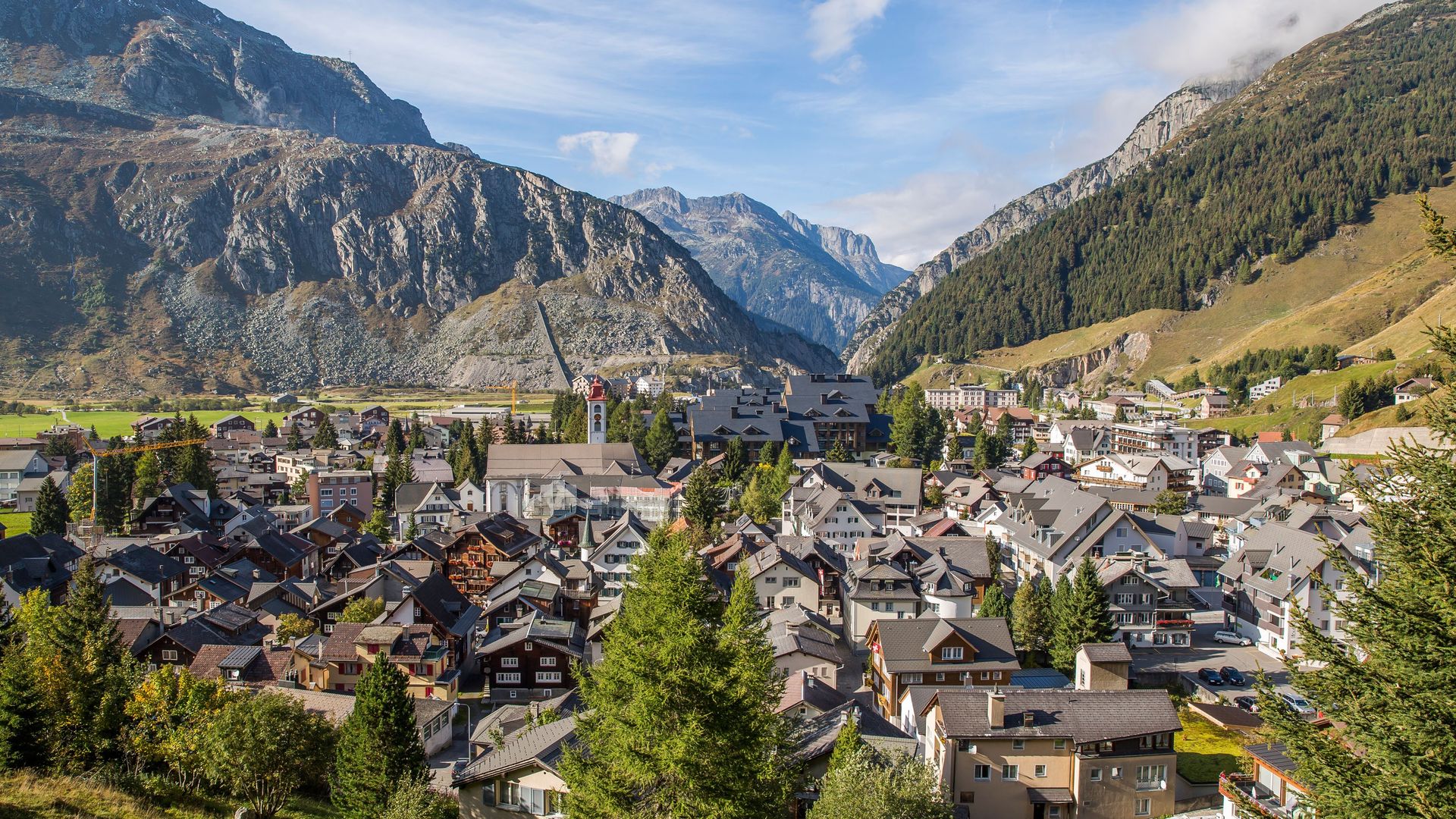Andermatt through the ages
Andermatt, November 28, 2025
Andermatt lies at the foot of the Gotthard massif, surrounded by imposing peaks. It is a place that has attracted travellers, traders and adventurers for centuries. Even in the Middle Ages, the Ursern Valley was an important north-south connection across the Alps. Mule drivers transported goods and the first inns offered shelter and accommodation on the route over the Gotthard. Its location at the intersection of several Alpine passes made Andermatt a hub for trade, culture and later also for the military. Over the centuries, the village has been redefined time and again, from a trading centre to a military base and finally to a modern tourist resort. Each era has left its mark, which is still visible today.
From military base to mountain village on the rise
For decades, the Swiss Army shaped the village's appearance. In the 19th century, strategic installations were built that became part of the so-called ‘Reduit’ during the Second World War – the Alpine fortress that was to serve as a place of retreat in case of defence. Barracks, bunkers and barriers dominated the townscape, and the noise of military exercises was part of everyday life. With the end of the Cold War, a period of upheaval began: the army reduced its presence, jobs were lost and Andermatt faced an uncertain future.

Once a quiet mountain village...

...now a lively tourist resort.
But stagnation gave way to a new beginning, and with foresight and commitment, a vision emerged of a lively mountain village that combines tradition and modernity. Vacant military buildings made way for new projects, and the population responded to the change with remarkable openness and adaptability. New momentum in the heart of the Alps Since construction work began on the tourist resort in the 2000s, Andermatt has undergone a fundamental transformation. The connection between the ski areas of Andermatt, Sedrun and Disentis created the largest ski area in Central Switzerland. Modern restaurants, the ice rink in Andermatt Mitte and numerous newly created bike and hiking trails now enrich the range of leisure activities on offer. The 18-hole golf course and the concert hall with its excellent acoustics also bring new cultural and sporting impulses to the region – for guests and locals alike.
Activities such as skiing, ice skating, cross-country skiing and cycling have long been a part of life in the Ursern Valley. Today, Andermatt continues this tradition with modern facilities and contemporary infrastructure. The joy of exercise in the heart of the Alps remains.

Skiing on the Gemsstock – an experience then as now.
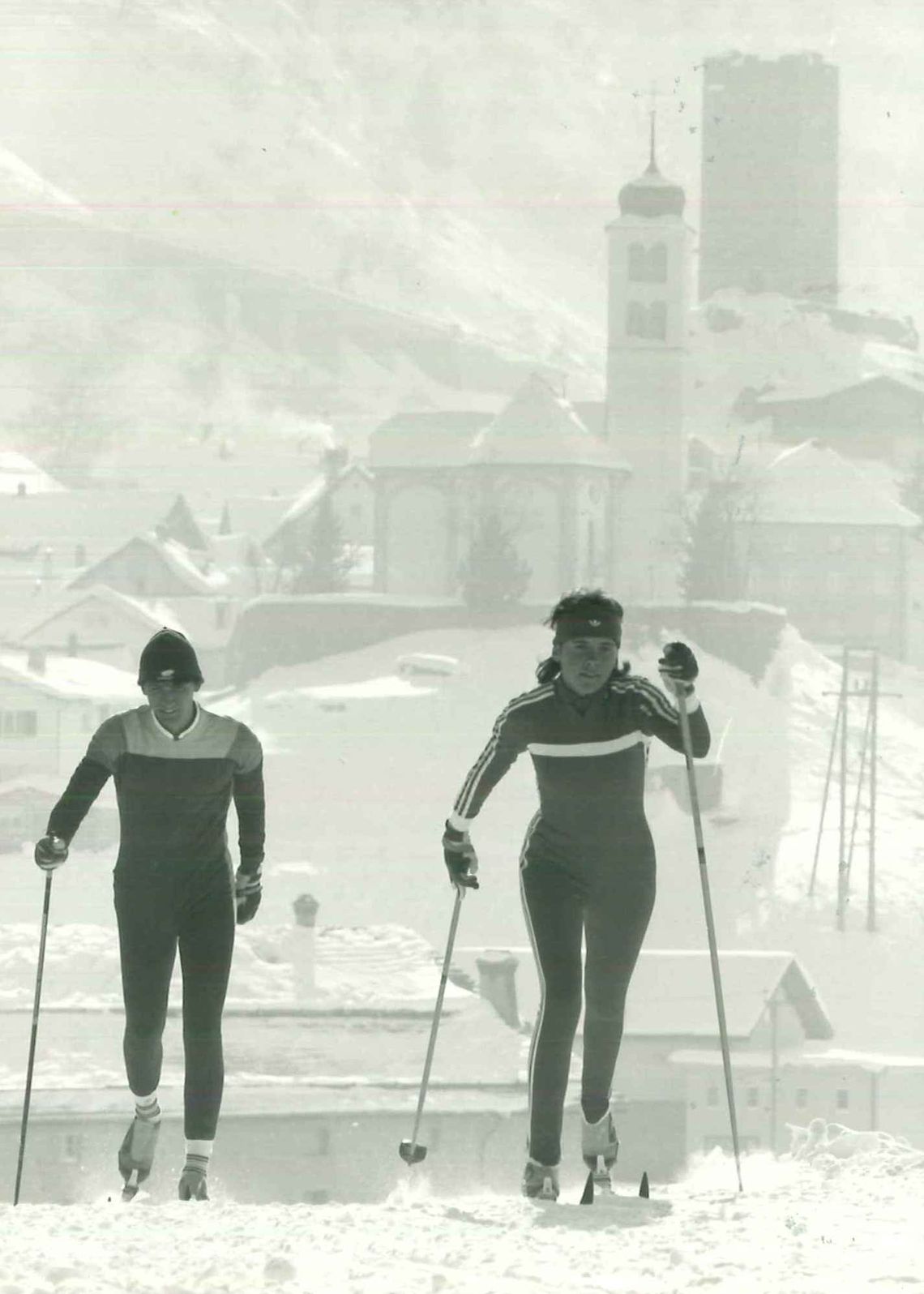
Cross-country skiing with the tower of Hospental in the background.

Even back then, the legendary Alpine passes around Andermatt were conquered.
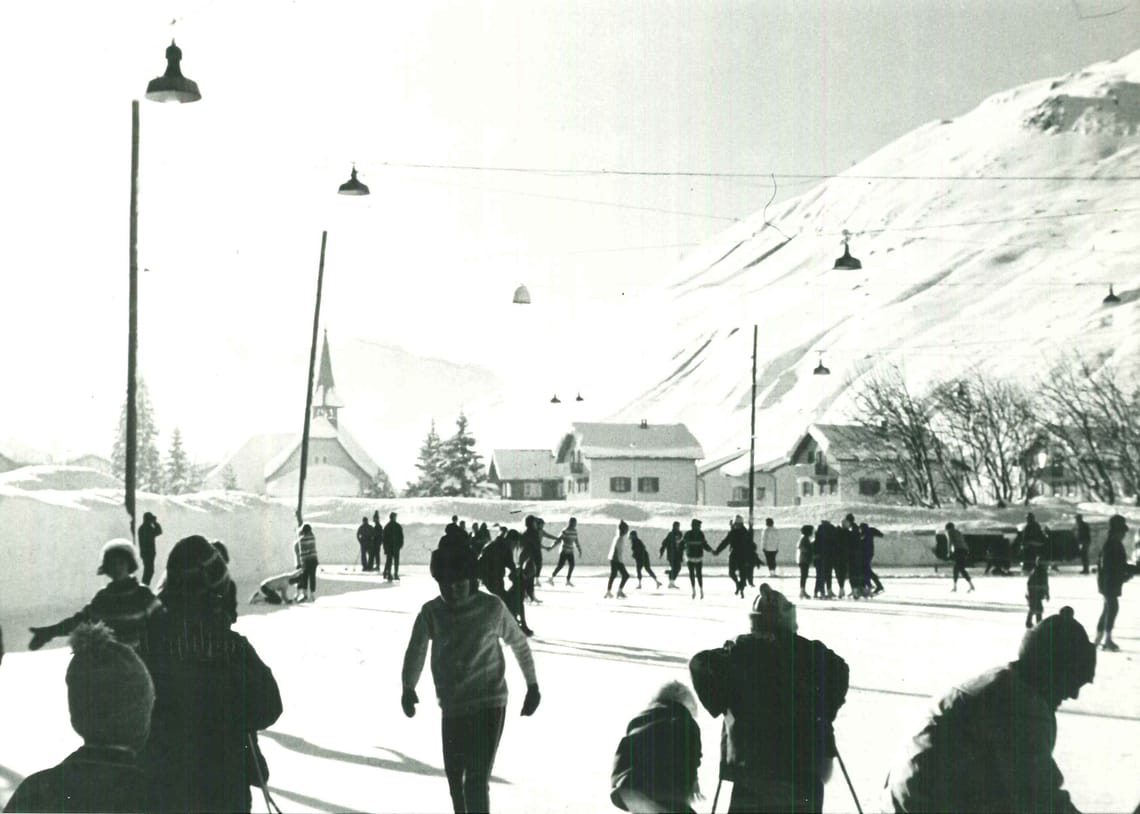
New location, same enjoyment: the ice rink has been thrilling young and old for generations.
This dynamic brings with it both opportunities and challenges: infrastructure, transport and housing must keep pace with growth. The municipality and regional partners are constantly working to harmonise quality of life, sustainability and economic development. Tradition and openness Andermatt has always been a place of change. Its residents respond to change with a mixture of healthy pragmatism and openness – critically, but constructively. This attitude has shaped the village for centuries and allows new things to emerge without supplanting the old. Even today, the people of Andermatt are shaping the new era with their down-to-earth attitude, vision and heart. Whether in the expansion of tourist infrastructure, the hotel industry or cultural life, the population is actively shaping change and ensuring that Andermatt remains authentic.
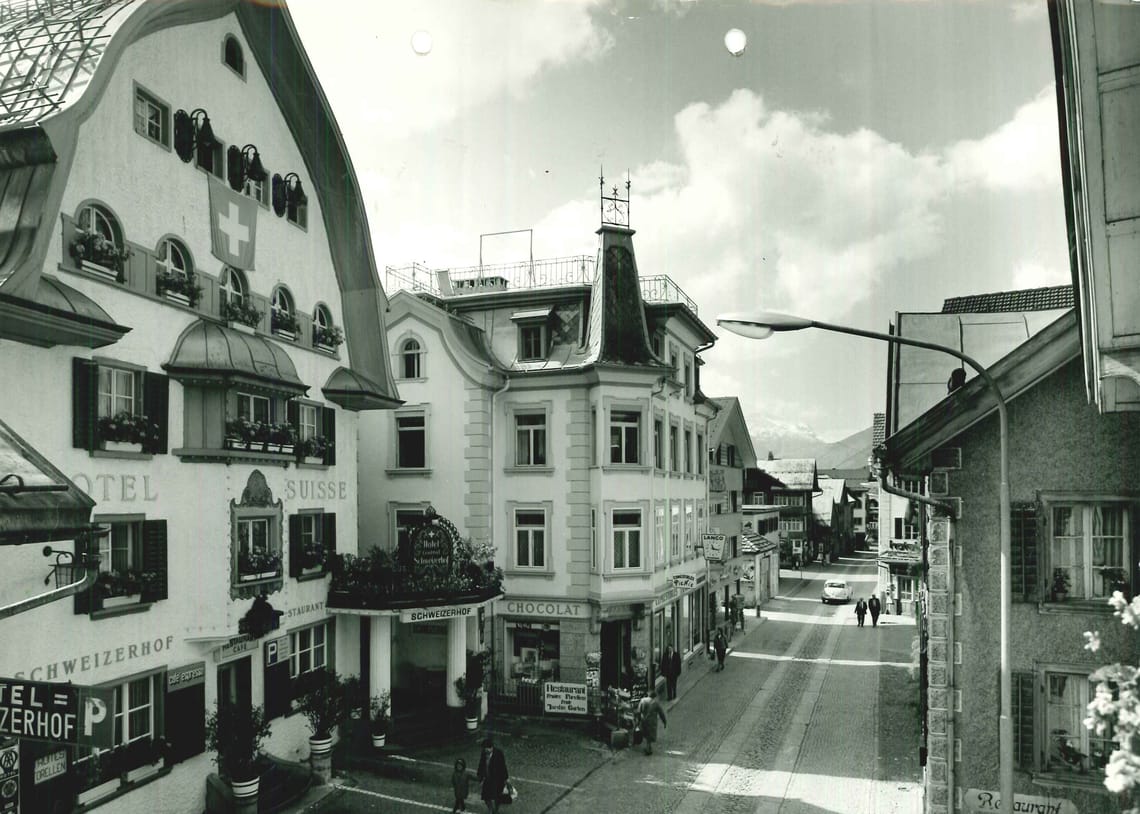
The centre of Andermatt in days gone by, with traditional hotels and shops.

The Ursern Town Hall: a witness to an eventful history.
A village reinvents itself Today, Andermatt is a prime example of the successful transformation of Alpine regions – both tradition-conscious and forward-looking. Between historic streets, modern hotels and unspoilt nature, a place is emerging that harmoniously combines history and the present. The former military base has become a lively year-round destination that impresses with its cultural diversity, sporting opportunities and strong community. Andermatt is looking ahead and showing that change can be successful when vision, identity and cohesion go hand in hand.

Andermatt around 1939 – a view of the Ursern Valley towards Furka.
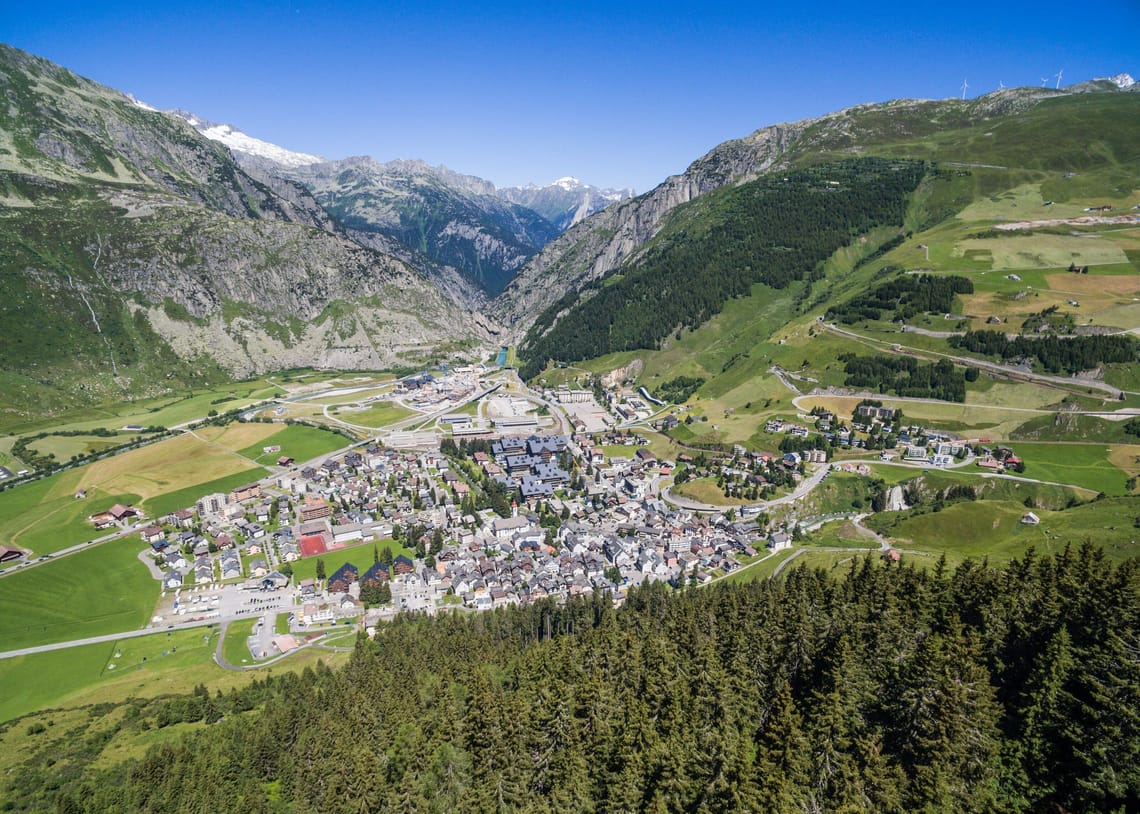
Andermatt in 2017 – where history meets the present and the future.

